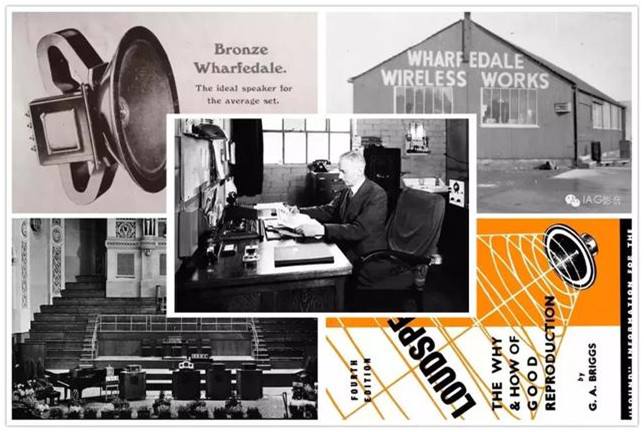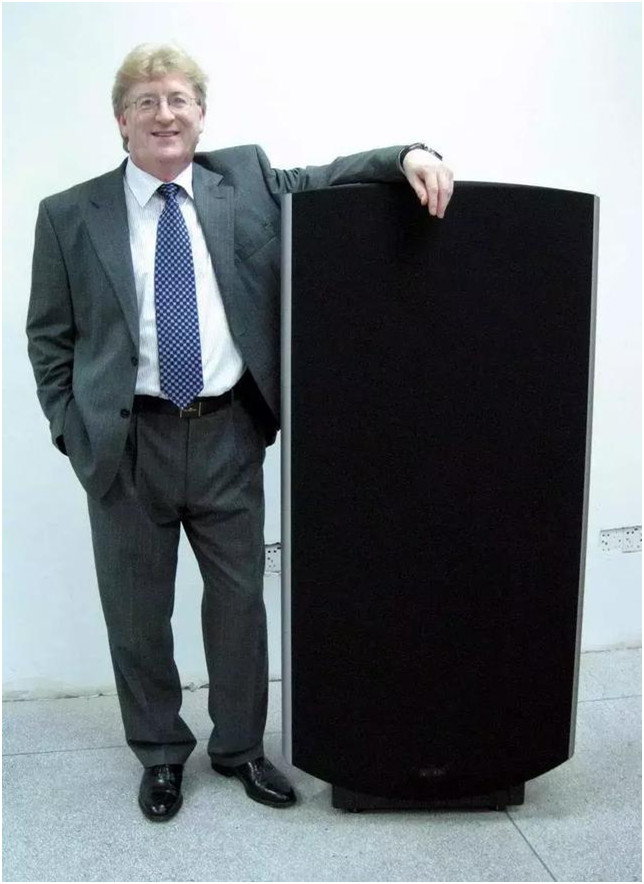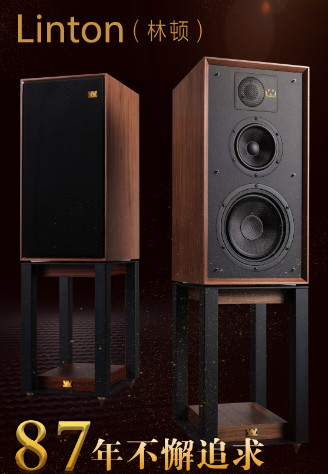
Continuing its modern take on traditional Japanese purist amplification, Luxman finally offers a MM/MC phono/line preamp partner for its ultra-retro MQ-300 valve amplifier
Review: Ken Kessler Lab: Paul Miller
Just over three years ago I had my first taste of cost-no-object Luxman [HFN Nov ’16] in an achingly long time. The company has had its ups-and-downs, but fortunately its new owners – IAG, home to Quad, Wharfedale, Audiolab and Castle Acoustics – realise what a plum brand Luxman is, so it was expected that the flagship MQ-300 power amplifier which so charmed me would be followed by a worthy preamp. Enter the alluring CL-1000, at £16,000 a grand more than the power amp and looking every penny of its price.
To clarify what Luxman offers, the company has three main amplification ranges (as well as turntables [HFN Oct ’19] and digital source components). The three comprise the NeoClassico ‘minis’ [HFN Nov ’19], the solid-state models [HFN Jan ’18] and the vacuum tube offerings, of which this is the dearer of two preamps.
MODERN CLASSIC
But this isn’t any ol’ high-end preamp, for it is, after a staggering 45 years, the successor to 1975’s C-1000. This should have special resonance in the UK because I believe that our own Tim de Paravicini, of EAR Yoshino fame, had a hand in the design of that much-sought-after classic. You have to put them side-by-side to tell them apart. Rotaries and toggles in similar locations, a lavish wooden sleeve – Luxman knows how to handle retro with panache.
Aside from the lack of remote control, this is absolutely a 21st century offering. Valves long ago ceased to be anachronistic or sentimental, and are now permanently a sub-genre of contemporary high-end, just as this unit also benefits from numerous advances not available in 1975 – hence its true modernity. In keeping with current practice, it accepts one balanced source, three RCA line sources and phono via an input labelled ‘Ext In’.
Why the odd tag? I grabbed the Japanese catalogue at the Tokyo show, and found inside a photo of the rear of the CL-1000 without phono stage rotaries, so I’m guessing it’s an option in some markets. What we get are adjustments for MM with three gain levels and six capacitance values and MC with three impedance/gain settings to match most cartridges. I tried two of each of varying characteristics and found gain, headroom and other parameters perfectly suitable, while the phono stage is deathly quiet, to boot.
Another nice touch are two sets of RCAs and two balanced XLRs for outputs. Though you can only run either/or, selected from the front panel, both pairs within the chosen type operate concurrently. Hence you can feed either two amp/speaker combinations simultaneously, or you can bi-amp via a split crossover. You just cannot run one balanced and one single-ended, or all four, at the same time.

SHEER MAGNETISM
That loaded fascia may reek of the era before the minimalists took over, but every function purists deem deleterious to the sound can be defeated. The tone controls have user-selectable turnover points, there are polarity inversion switches for main output and balanced input, a ‘line straight’ bypass, a low-cut filter and – for those who have archive recordings on LP or tape – a mono/stereo selector and balance rotary.
Meanwhile, above the balance knob is a light that blinks when the unit switches on, and which glows steadily in playback state. Then there’s the ‘Articulator Function’. This is a procedure in which the device generates a special toneburst to demagnetise the transformer cores, ‘for an even higher degree of sonic purity’ according to Luxman.
Ready to listen, I was first treated to a waiting period when the row of lights next to the Articulator went through their sequence. It degausses the system, a practice that’s not so whacky as to be unique: some years ago, Gryphon sold a system demagnetiser, Air Tight offered a cartridge demagnetiser, as does Luxman in its EQ-500 phono stage.
Unlike switchable polarity inversion, degaussing is difficult to assess here because the CL-1000 goes through the process every time you turn it on, and I cannot find any way to defeat it from activating at switch-on. It’s not impossible, though, if you do want to try to hear a difference beyond the automatic degaussing when powering on because you can manually activate the process whenever you like simply by pressing the button on the fascia.
Despite never hearing that demagnetising was an issue that needed quotidian attention, I am not prepared to suggest whether or not Luxman is making a mountain out of a molehill. It remains to be seen (or heard) and I prefer to be generous and to look upon it as a form of automatic maintenance, as the switch-on sequence is hardly an intrusion, and it relieves us of having to worry about it, like valve auto-biasing or a self-defrosting fridge. And after all, anything that makes my life easier is welcomed with open arms.
TRANSFORMERS AND TUBES
When purse strings are relaxed, the high-end audio designer has several routes open in the quest for the ideal ‘analogue’ volume control. Beyond a high quality film potentiometer there’s always the option of a switched attenuator using a ladder network of resistors to offer precisely calibrated ‘stepwise’ control. Then there’s the transformer route, realised in its most simple form as a purely passive control offering some +6dB of voltage gain at the expense of a high and variable output impedance. Luxman may use a pair of transformers in the CL-1000 but its ‘LECUTA’ (Luxman Electronically-Controlled Ultimate Transformer Attenuator) is closer in execution to the volume control regime used in Nagra’s HD PREAMP [HFN Nov ’18]. Here a tube line buffer (employing E88CC triodes) is combined with a transformer employing 34 secondaries that are switched in combination to provide very fine adjustment in volume. A further E88CC-based line stage, with super permalloy output coupling transformers, delivers a more consistent output impedance, and though ~480ohm is still on the high side, the CL-1000’s extended frequency response remains less sensitive to volume position than is typical with transformer-based preamps.

SILK DEGREES
Used with Audio Research REF75SE and D’Agostino Momentum Stereo power amps, which are balancedinput-only, I also had the opportunity to try it with the Audio Research REF160S in both single-ended and balanced modes – and you already know I preferred the latter configuration. Even from cold, the CL-1000 exhibited two initial impressions that stayed with me throughout the listening sessions.
First and most notable is its utter gracefulness. There is no shortage of subtle,
refined preamps on the market, but this unit exhibits such finesse that I found myself turning to overly familiar works just to hear if it could eke out more low-level information or infinitesimal details. With the 50th anniversary edition of The Beatles’ Abbey Road on the turntable, I decided to wallow in the masterpiece that is the medley on Side 2.
It certainly possessed a forensic quality that drew my attention to disparate musical events, but the magic was in doing so without sounding hygienic, aggressive or disciplinarian. Instead, it sounded –and there is only one word for it – ‘silky’. Whether reproducing raucous moments – ‘Polythene Pam’ burst from the speakers with the force of a military march – or ‘Because’, the CL-1000 retained an overall behavioural mode that inferred peerless consistency – the second of its most notable virtues. It was delivering reference-grade detail, neutrality and coherence.
As an unintended benefit, especially for listeners who feel the need to dissect music, the openness and transparency were of such a revealing standard that one could, if masochistic enough, listen for edits. I resisted digging out ‘Strawberry Fields Forever’ or ‘Being For The Benefit Of Mr. Kite!’ or other tracks assembled from myriad splices, but you get the idea.

TIME LORD
This is not, however, a caveat warning of painfully analytical behaviour. The sound remains of a seamless, mellifluous whole, such that I was continually reminded of full-range electrostatic speakers. When I turned to one of the ‘showoff’ recordings in my arsenal, the 60-year-old score to The Music Man, the spoken-word ‘Rock Island’ verbal assault that opens the post-overture proceedings was presented as what is best described as a holographic spatial event.
Why is this important, or, crucially, beneficial? Because that is one of the most irritating experiences in the history of Broadway, despite the recording being awarded ‘Best Original Cast Album’ at the first Grammy Awards ceremony in 1958. It’s just a bunch of whiny people shouting at each other in a rhythmic pattern. Hearing it once is enough. But so life-like was the reproduction through Luxman’s CL-1000 that I was drawn in, with spider/fly irresistibility. Hell, I even ‘Gary, Indiana’, which was sung by a screeching, lisping 11-year-old.
Is rendering the unlistenable ‘listenable’ a virtue? I can think of no higher compliment for a piece of hi-fi equipment. After all, it’s one of the bases of my obsession with open-reel, which even has me playing Ray Conniff, Mantovani and the like. Which led to another revelation: what the CL-1000 does with massed strings and huge orchestras is something to behold.
It was, however, an SACD that had the greatest impact. (I beg you: try it!) As dazzling as is The Thelonious Monk Quartet’s Monk’s Dream on One-Step LP, the SACD should be regarded as a milestone in this digital format. Via the CL-1000, it recreated the necessary club-like intimacy small-ensemble jazz albums demand to sound of their best.
The CL-1000’s part? It reaches into its own past, as well as that of the music itself, to deliver such vibrancy and realism that one might even suggest it is a time machine.
HI-FI NEWS VERDICT
At the risk of alienating those of you who think hair shirts are comfortable, the Luxman CL-1000 unashamedly marries truly stellar sonic performance with the sort of perceived value – and build quality – that eludes much of the high-end. It is a delight to use, it leads to hours-long listening sessions and it is so gorgeous that you’ll want to fiddle with the controls just for the tactile rewards. Magnificent!
SoundQuality: 90%
![]()
LAB REPORT – LUXMAN CL-1000
With the LECUTA volume cranked fully clockwise, maximum gain is +15.1dB (XLR in/out) with a channel imbalance of 0.12dB at +6dB gain. Maximum output is a substantial 19.5V with distortion increasing steadily with level from 0.0025%/100mV to 0.014%/1V and 0.15%/10V. This holds true from 100Hz-10kHz but THD increases marginally at higher frequencies (0.032%/1V/ 20kHz) and more obviously so at very low frequencies to 0.08%/ 20Hz and 0.9%/5Hz. This is more likely a function of the input and output coupling transformers than the dual-mono E88CC tube line stage [see Graph 2, below]. The triode stage is also very quiet, revealing an A-wtd S/N ratio of 100dB (re. 0dBV) and a residual noise of just –97dBV (14μV). The response is extended, showing a lift in the ultrasonic to +1.7dB/100kHz but, more worrisome for vinyl sources, a +12dB spike at 3Hz. The low cut filter [dotted trace, Graph 1] is mandatory for LP-based systems.
The CL-1000 has a versatile MM/MC phono stage even if the gain is not exactly as advertised! In practice the ‘+38dB MM’ input is closer to +54dB while the +57dB and +66dB MC options (40/10ohm loading, respectively) are closer to +73dB and +76.5dB. This means the CL-1000 is rather better suited to low-output MMs and MCs than you might suspect, without there being a trade-off in either the input overload margins or S/N ratios. In MM guise the CL-1000 has a sensitivity of 2.1mV with a generous limit of 90mV (32.6dB headroom) and a wide 86.2dB A-wtd S/N ratio. For MC (low/medium and high gain) the figures are 225μV and 150μV for sensitivity with overload limits of 10.5mV and 7.5mV, and 73.6dB/67.0dB for the S/N. Clearly ‘MC Low or Med’ are the settings to choose for 95% of likely MCs.
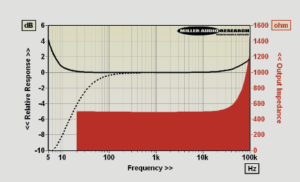





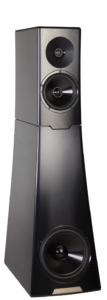 Hailey 2.2 可稱得上直接,音色中性,動態、聲音訊號交代完整,又給你一種潛力還未被搾盡的感覺,沒有任何緊張,永遠儀態萬千。就是這樣,它並非奔放型,總是氣定神閒地把音樂動聽之處一一重現,然後在不影響像真度的前提下又不急不躁地收起不夠「美麗」的細微枝節。 例如聆聽平井堅的《歌バカ》,平井的聲音偏向尖細,不是厚潤雄渾型,人、假聲轉換算是頻繁,Hailey 2.2 充分重現當中的轉折、變化,又 因為中音密度足夠,所以聽起來不會帶有妖氣,也不會粗或薄。乾淨中不 覺乾寡,雖然沒有強調水分,但與乾、粗還有好一段距離,亦示範了咬字 清晰其實無需強化齒音的。 音場、定位是這對揚聲器另一強項,受益於準確相位,令音像十二分清晰,定位沒有偏差,輪廓亦沒有模糊,更不會因動態起伏而變化,非常 安定。前後層次其實比左右闊度更加吸引,這種前後定位並不誇張,聽起 來有種「正是如此」的自然感,但不用誇張化,亦可清楚聽出不同音像的 前後位置,而且無需把自己固定在皇帝位,都可以聽得到上述一切,因此,Hailey 2.2 是一款眾樂樂的揚聲器。
Hailey 2.2 可稱得上直接,音色中性,動態、聲音訊號交代完整,又給你一種潛力還未被搾盡的感覺,沒有任何緊張,永遠儀態萬千。就是這樣,它並非奔放型,總是氣定神閒地把音樂動聽之處一一重現,然後在不影響像真度的前提下又不急不躁地收起不夠「美麗」的細微枝節。 例如聆聽平井堅的《歌バカ》,平井的聲音偏向尖細,不是厚潤雄渾型,人、假聲轉換算是頻繁,Hailey 2.2 充分重現當中的轉折、變化,又 因為中音密度足夠,所以聽起來不會帶有妖氣,也不會粗或薄。乾淨中不 覺乾寡,雖然沒有強調水分,但與乾、粗還有好一段距離,亦示範了咬字 清晰其實無需強化齒音的。 音場、定位是這對揚聲器另一強項,受益於準確相位,令音像十二分清晰,定位沒有偏差,輪廓亦沒有模糊,更不會因動態起伏而變化,非常 安定。前後層次其實比左右闊度更加吸引,這種前後定位並不誇張,聽起 來有種「正是如此」的自然感,但不用誇張化,亦可清楚聽出不同音像的 前後位置,而且無需把自己固定在皇帝位,都可以聽得到上述一切,因此,Hailey 2.2 是一款眾樂樂的揚聲器。



 晶體管放大與膽機是兩種截然不同的表現,聲音一軟一硬各走極端,偏偏又能共存,互補長短!只能說「膽石」混合放大是別有一番滋味,事實上,KRATOS 播放女聲和古典音樂,特別是絃樂,聽感是份外嫩滑,執筆時想起當晚開聲,那刻引起我注意是高頻聲音升了格,平日我聽慣了晶體管擴音機驅動 Morel Octave Signatue 書架喇叭,與這對書架喇叭相對了數載,深知道它的半球體軟膜高音單元,鮮有像此刻幼細如絲的輪廓,滑如牛奶的聲音,幾乎能肯定是 KRATOS 的功勞了,當時播放陳潔麗「1/2」專輯,Lily 從來都恰如其份掌握感情,這晚我熟悉的 Lily 歌聲竟感覺多了一份女性嬌媚,〈情迷Milano〉流露了跳脫活潑感,她以降半度的唱法演繹出〈天生一對〉,營造出兩人合唱效果,在 KRATOS 播放底下真是維妙維肖,這次不單只Lily歌聲吸引,就連男聲趙鵬亦令我非常投入聽他唱出每字每句,人聲低音炮〕是他的聞名作品,我擁有一張 UHQCD 版本〈閃亮的日子〉,拿來一放,打從「是誰.…」那句起,我已被磁性嗓音懾著,(被遺忘的時光)曾幾何時被音響店鋪播到爛熟,是夜又再重溫,只覺歌聲中滿載感慨,趙鵬低沉的唱腔令無奈感覺加倍入肉,過去聽他的歌我是覺得喉頭音運用得有點過多,似是為了配合低音炮形象才刻意壓低,但今次卻完全地改觀,我認同他是唱得之人,這次聽得很清楚趙鵬運用丹田氣和控制呼吸力度的技巧,不需要花巧已很吸引,KRATOS 將過往迷糊感覺洗去,換來有血有肉的實在聽感,播放出的每首歌都能傳情達意,又如播放同一張專輯的〈味道〉,未有聽到歌聲已被鋼琴彈出的前奏迷倒了,這段引子帶來的效果並非所謂發燒境界,而是帶有親切熟悉的感染力,如像聽了故事的開端,期待接下來的主旋律出現,若沒有這次的經驗,我是想不到趙鵬的歌聲也可以很輕很溫柔,全然唱出了歌詞裡故事的感覺,毫不張揚的技巧令我重新喜歡上這專輯,區區兩支 ECC8O3S 管配合A類線路用作前級放大!想不到發揮會是如此理想,不得不服 PATHOS 的設計啊!
晶體管放大與膽機是兩種截然不同的表現,聲音一軟一硬各走極端,偏偏又能共存,互補長短!只能說「膽石」混合放大是別有一番滋味,事實上,KRATOS 播放女聲和古典音樂,特別是絃樂,聽感是份外嫩滑,執筆時想起當晚開聲,那刻引起我注意是高頻聲音升了格,平日我聽慣了晶體管擴音機驅動 Morel Octave Signatue 書架喇叭,與這對書架喇叭相對了數載,深知道它的半球體軟膜高音單元,鮮有像此刻幼細如絲的輪廓,滑如牛奶的聲音,幾乎能肯定是 KRATOS 的功勞了,當時播放陳潔麗「1/2」專輯,Lily 從來都恰如其份掌握感情,這晚我熟悉的 Lily 歌聲竟感覺多了一份女性嬌媚,〈情迷Milano〉流露了跳脫活潑感,她以降半度的唱法演繹出〈天生一對〉,營造出兩人合唱效果,在 KRATOS 播放底下真是維妙維肖,這次不單只Lily歌聲吸引,就連男聲趙鵬亦令我非常投入聽他唱出每字每句,人聲低音炮〕是他的聞名作品,我擁有一張 UHQCD 版本〈閃亮的日子〉,拿來一放,打從「是誰.…」那句起,我已被磁性嗓音懾著,(被遺忘的時光)曾幾何時被音響店鋪播到爛熟,是夜又再重溫,只覺歌聲中滿載感慨,趙鵬低沉的唱腔令無奈感覺加倍入肉,過去聽他的歌我是覺得喉頭音運用得有點過多,似是為了配合低音炮形象才刻意壓低,但今次卻完全地改觀,我認同他是唱得之人,這次聽得很清楚趙鵬運用丹田氣和控制呼吸力度的技巧,不需要花巧已很吸引,KRATOS 將過往迷糊感覺洗去,換來有血有肉的實在聽感,播放出的每首歌都能傳情達意,又如播放同一張專輯的〈味道〉,未有聽到歌聲已被鋼琴彈出的前奏迷倒了,這段引子帶來的效果並非所謂發燒境界,而是帶有親切熟悉的感染力,如像聽了故事的開端,期待接下來的主旋律出現,若沒有這次的經驗,我是想不到趙鵬的歌聲也可以很輕很溫柔,全然唱出了歌詞裡故事的感覺,毫不張揚的技巧令我重新喜歡上這專輯,區區兩支 ECC8O3S 管配合A類線路用作前級放大!想不到發揮會是如此理想,不得不服 PATHOS 的設計啊!



 OPA-5A 與 Original 早前推出的萬元級合併放大器最大分別,在後級部份所用兩支放大管,現已由 KT88 分別取代 OPA-2A 的 2A3 和 OPA-3A 的 300B 之位置,前級部份則一如以往應用兩支 12AU7。由於 OPA-5A 的製作目標是要讓樂迷切身體驗 KT88 雄渾有力的音效,因此 Original 特為此訂製電源和輸出變壓器,供電部份所用的更屬漏磁特低的環牛,並以優質 PCB 線路板穩定銲接所用的每粒電子零件。電路中可見 OPA-5A 第一級運用雙 12AU7 三極管作訊號放大,並在其陰極電阻並聯 100u 電容,第二級同用 12AU7,並以陰極方式作推動級,目的在確保擁有理想低阻用以驅動第三級所用的兩支 KT88,然後再以兩隻頻寬特闊的日本 Z11 鐵芯之 El 型輸出變壓器作配合,使採用 A類單端功率放大的 OPA-5A 能為 4-8Ω 的揚聲器完滿提供 8W+8W 功率,OPA-5A耳擴在平衡輸出時達 4500mW + 4500mW (32Ω), 單端輸出在同一阻抗下亦達 1000mW + 1000mW,透過使用日本 ALPS 的 27型電位器作音量調控,能為音樂重播帶來理想操控,而且 OPA-5A在敔動後設有 30秒靜音延時功能,確保工作穩定而真空管經久耐用。
OPA-5A 與 Original 早前推出的萬元級合併放大器最大分別,在後級部份所用兩支放大管,現已由 KT88 分別取代 OPA-2A 的 2A3 和 OPA-3A 的 300B 之位置,前級部份則一如以往應用兩支 12AU7。由於 OPA-5A 的製作目標是要讓樂迷切身體驗 KT88 雄渾有力的音效,因此 Original 特為此訂製電源和輸出變壓器,供電部份所用的更屬漏磁特低的環牛,並以優質 PCB 線路板穩定銲接所用的每粒電子零件。電路中可見 OPA-5A 第一級運用雙 12AU7 三極管作訊號放大,並在其陰極電阻並聯 100u 電容,第二級同用 12AU7,並以陰極方式作推動級,目的在確保擁有理想低阻用以驅動第三級所用的兩支 KT88,然後再以兩隻頻寬特闊的日本 Z11 鐵芯之 El 型輸出變壓器作配合,使採用 A類單端功率放大的 OPA-5A 能為 4-8Ω 的揚聲器完滿提供 8W+8W 功率,OPA-5A耳擴在平衡輸出時達 4500mW + 4500mW (32Ω), 單端輸出在同一阻抗下亦達 1000mW + 1000mW,透過使用日本 ALPS 的 27型電位器作音量調控,能為音樂重播帶來理想操控,而且 OPA-5A在敔動後設有 30秒靜音延時功能,確保工作穩定而真空管經久耐用。





